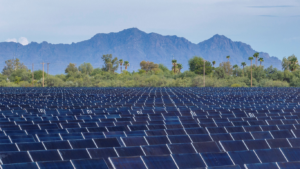New changes at the Environmental Protection Agency have begun and are proving to be scary or exciting, depending on whom you ask. Scott Pruitt started as EPA chief after a long career as a lawyer and Republican politician in Oklahoma, a state known for its oil and gas industry. In the past, he has described himself as a “leading advocate against the EPA’s activist agenda.” It came as no surprise, then, when he said that carbon dioxide is not a “primary contributor” to global warming. This statement by the new EPA chief has, unsurprisingly, caused some pushback by climate scientists.
In fact, the American Meteorological Society, the nation’s top meteorological association, wrote a letter to Pruitt, stating that “indisputable findings” show that carbon dioxide is the primary contributor to global warming, adding that they “are not familiar with any scientific institution with relevant subject matter expertise that has reached a different conclusion.” Pruitt, however, seems to be sticking to his guns. It remains to be seen what the future holds for the EPA, but given the disagreement between its chief and climate scientists, we can expect a fight over the future of environmental regulation.
Whatever happens in the political world, however, should not stop the onward march of the renewable energy industry. For instance, according to the Energy Information Agency, renewable energy sources provided 16.9 percent of electricity generation through the first half of 2016.This figure will likely come as a surprise to many who have wrongly assumed that renewables make up a small fraction of electricity generation.
Many ask whether renewable sources are truly competitive with fossil fuels or whether their competitiveness depends on subsidies. The answer is mixed. While wind and solar get certain tax credits, the oil and gas industry also gets significant tax breaks through obscure parts of the tax code. In fact, it’s most likely that oil and gas gets bigger tax breaks than renewables. Once you take away these tax benefits, renewables are competitive in parts of the country with strong renewable resources. For instance, wind is competitive in the middle of the country which is very windy. In the future, it’s not likely that renewables will replace all fossil fuels or vice versa. Rather, renewables will be a reliable and competitive part of the overall electricity generation mix and natural gas will make up the rest of that mix.




